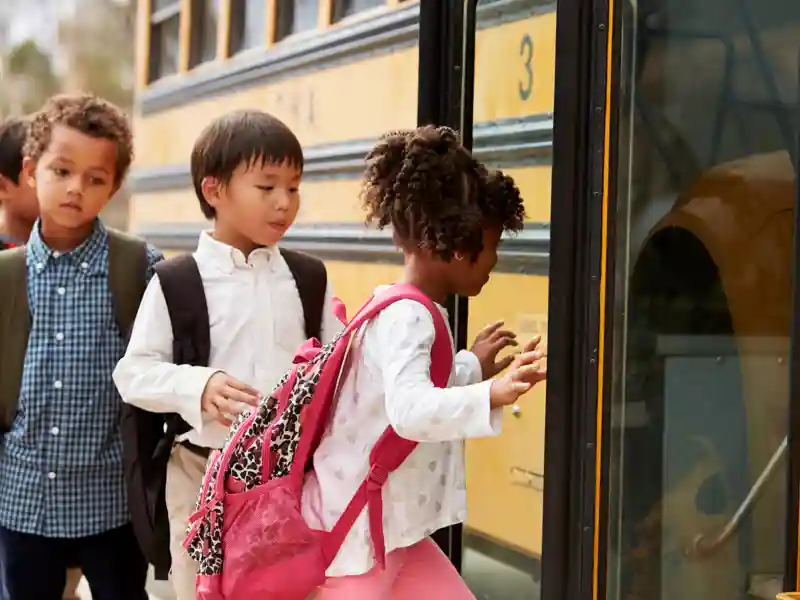
As students return to school, the excitement of reuniting with friends and taking on new learning adventures fills the air. And while every change brings some new risks, there are things we can do to mitigate them. Here are some tips to help keep the students in your life safe and enable a smooth start to the school year.
Safe School Transportation
However your child gets to school, make sure they know how to do it safely. This includes road safety rules, such as looking both ways several times before crossing the street and ensuring they use designated crosswalks.
If your child takes the bus, remind them to wait a safe distance from the road and to wait until the bus has come to a complete stop to move toward it for boarding. If students need to cross the road after getting off the bus, remind them to walk at least three metres in front of the bus before crossing so the driver can see them. If your child bikes to school, ensure their helmet still fits properly and that they know hand signals for turning.
When you’re driving through school zones, ensure you’re following speed limits and be vigilant for students. You never know when a child might step off the sidewalk or walk out from between parked cars. Your alertness can prevent an accident.
Packing for School
Ensure your child’s backpack is no heavier than 10% – 15% of their body weight. This will help prevent discomfort and injury. In their lunch bag, keep cold foods cold and hot foods hot using insulated containers and ice packs, and ensure you’re following your child’s school and classroom allergy policies.
Double check supplies lists from your school, and ensure anything you’re sending with your child is age appropriate. For example, students in younger grades should only have round-tip scissors.
Bullying Awareness
All students deserve a safe learning environment. Help your child understand the different forms bullying can take, and provide guidance on reporting incidents. Open and supportive communication is key to reducing the impacts of bullying. Encourage your child to share any concerns or problems they might have at school with you or a trusted adult.
Teach your child to stand up for themself and their peers in a safe way, while emphasizing the importance of treating classmates, teachers and staff with respect. Creating a culture of inclusivity can greatly contribute to the overall safety and well-being of students.
Digital Safety
In the digital age, there are new ways to learn, but there are also emerging risks that can disproportionately impact children online. Back-to-school safety needs to include navigating the online world responsibly.
Set age-appropriate guidelines for the use of electronic devices, and have ongoing conversations with your child about the potential risks of sharing personal information online. Here are some points you can cover:
- Once something is online, you no longer have control of it, so be careful what you share.
- Personal information shared online can be used against you by bullies, scammers and criminals.
- Cyberbullying is just as serious, if not more so, as in-person bullying. It should be reported to trusted adults and addressed.
- People we talk to online aren’t always who they say they are. Avoid talking to strangers online, and talk to a trusted adult if something feels weird about any online interaction you have.
NFP offers personal cyber insurance coverage for the dangers you and your household face during online activity — including cyberbullying, online scams, account takeover/compromise, extortion and more.
Emergency Preparedness
At the beginning of the year, ensure your child’s school has up-to-date emergency contact information and that your child knows who to contact in case of an emergency. You can also ask the school about their plans for emergencies, including procedures and alternate locations.
If your child has any allergies or medical conditions, communicate them to school staff and teachers. Ensure your child knows how to administer any needed medication.
Back-to-school safety requires support from parents, teachers, students and our broader communities. Together we can reduce risks to students and support their learning throughout the coming year.